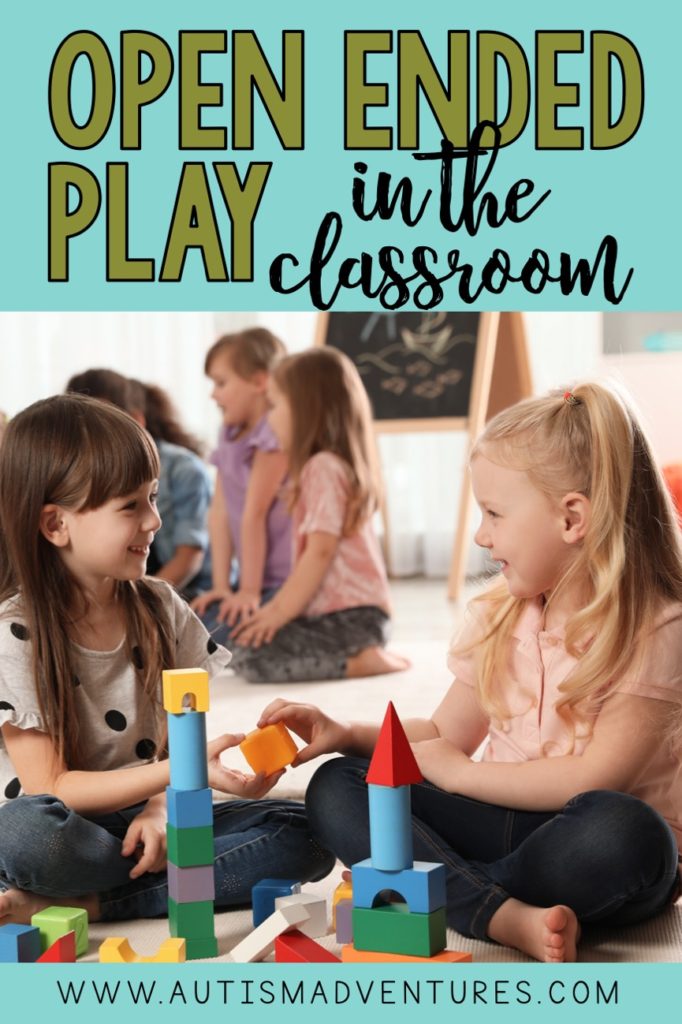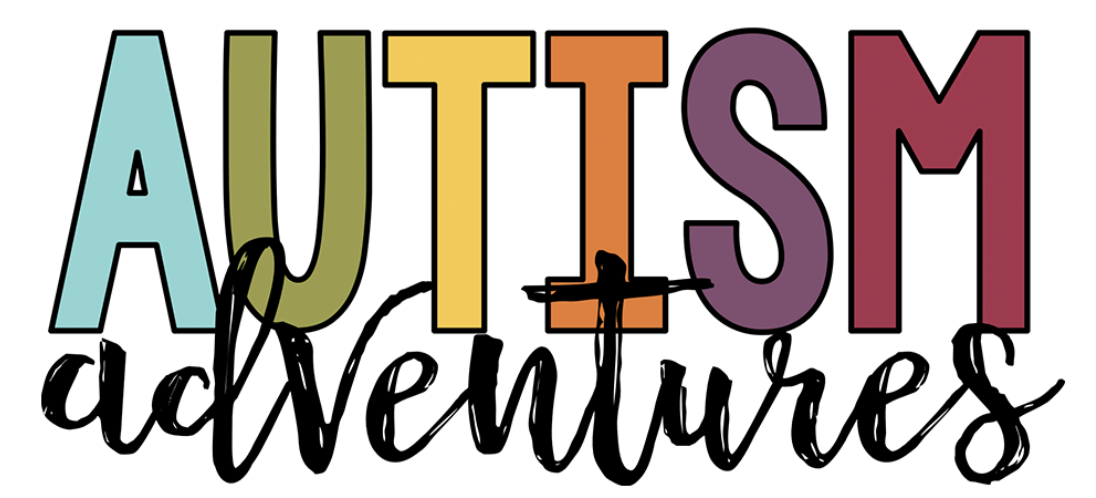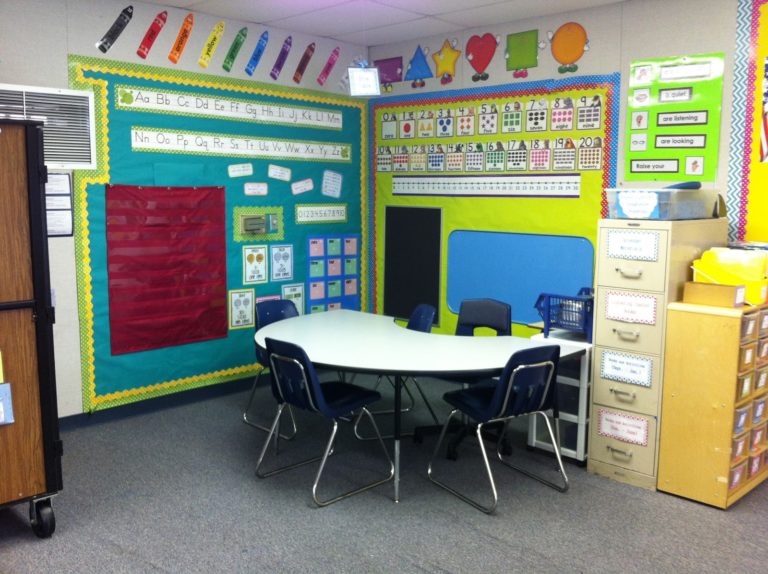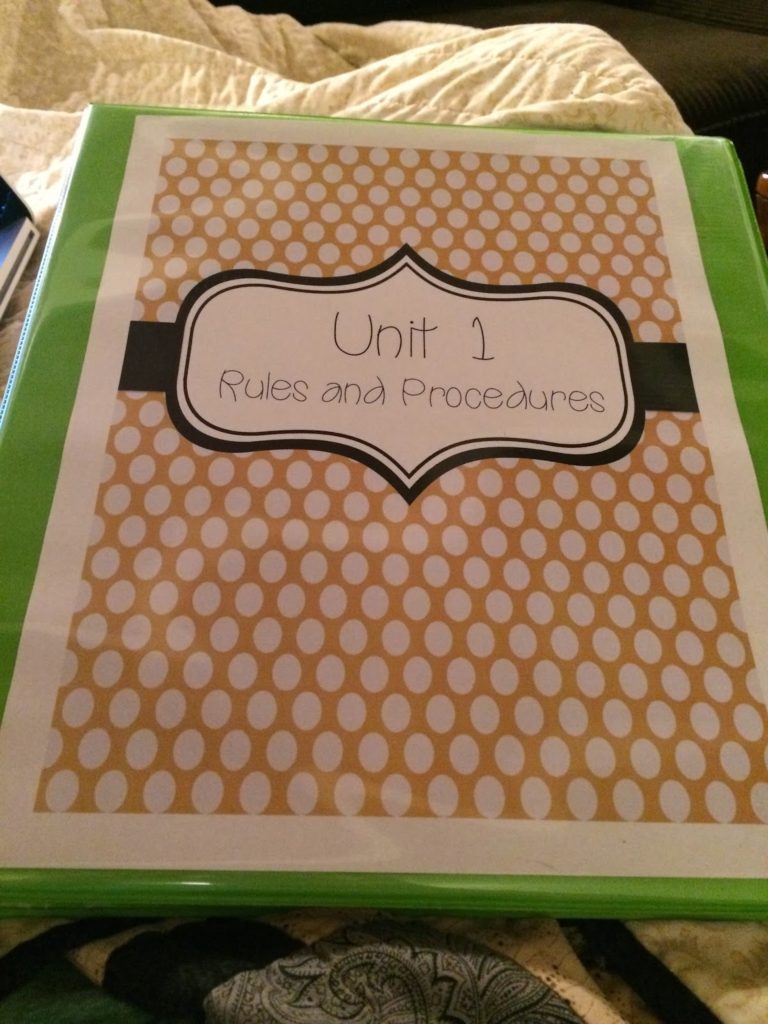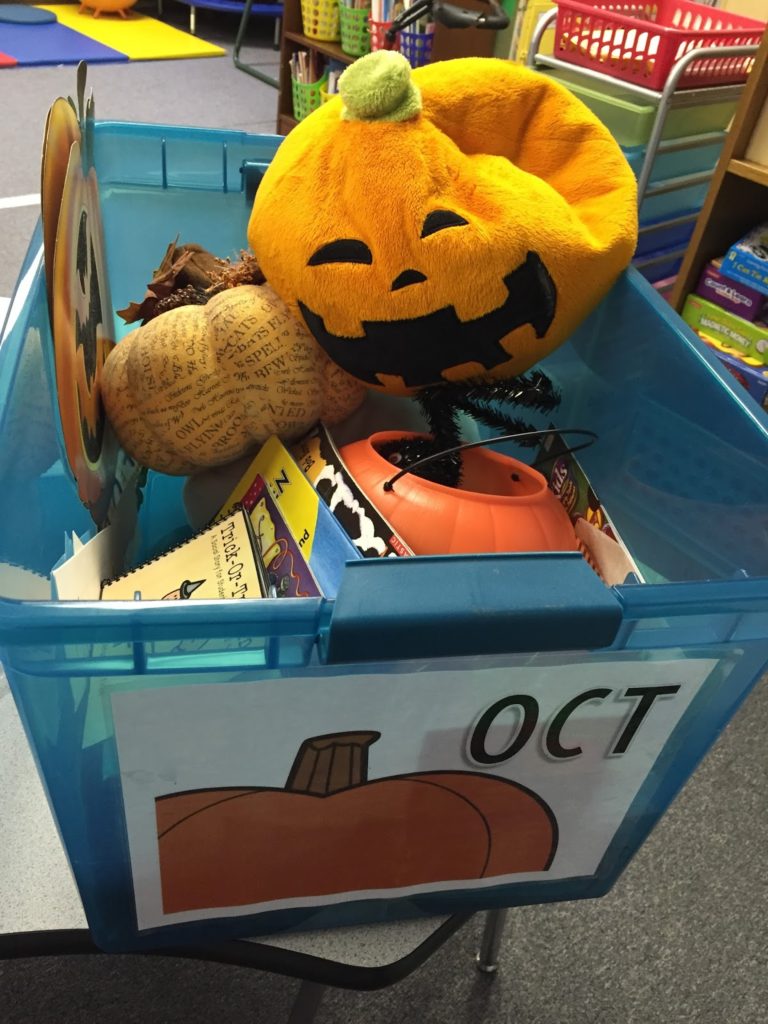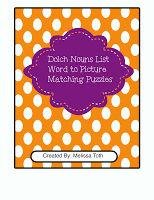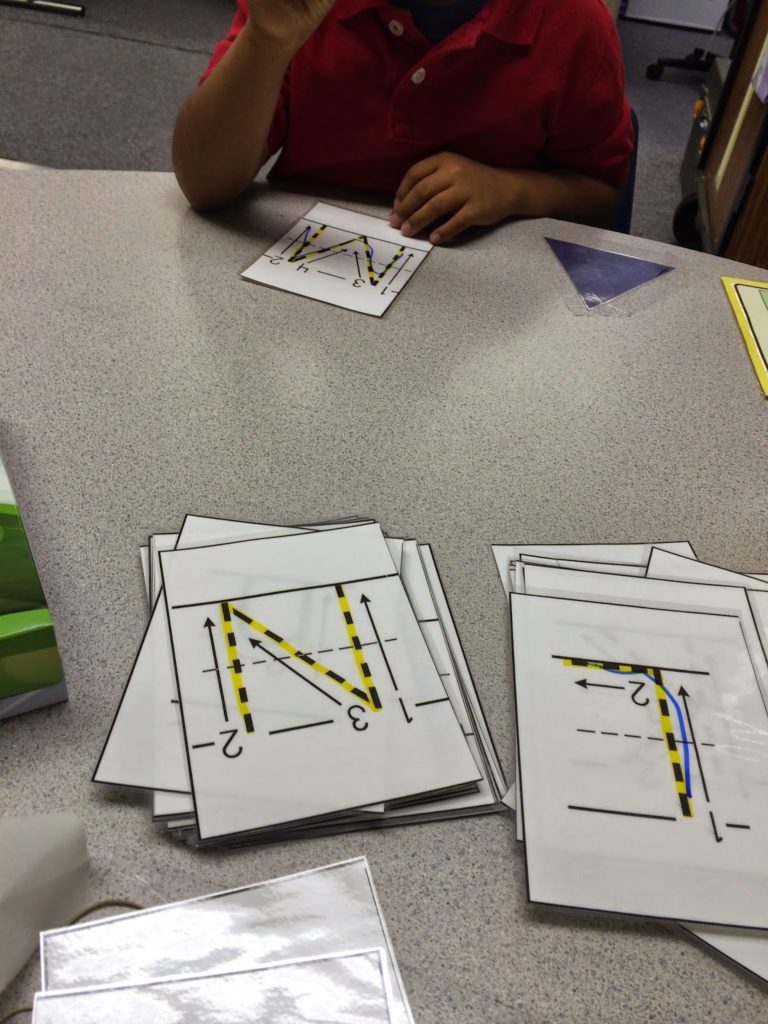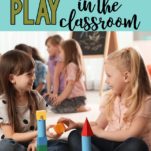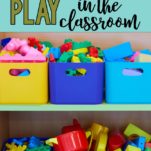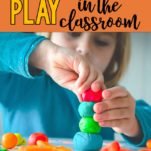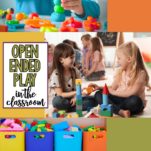Open Ended Play in the Classroom
Many times, special education teachers focus almost solely on keeping a routine and providing structure. We post a daily schedule so that students know exactly what to expect and we reinforce the same routines day after day. We believe – and we have seen – that our students do well when they have this type of framework in our classrooms. Less unpredictability equals fewer opportunities for students to struggle with procedures, learning activities, and transitions. Today I am going to discuss open ended play in the classroom.
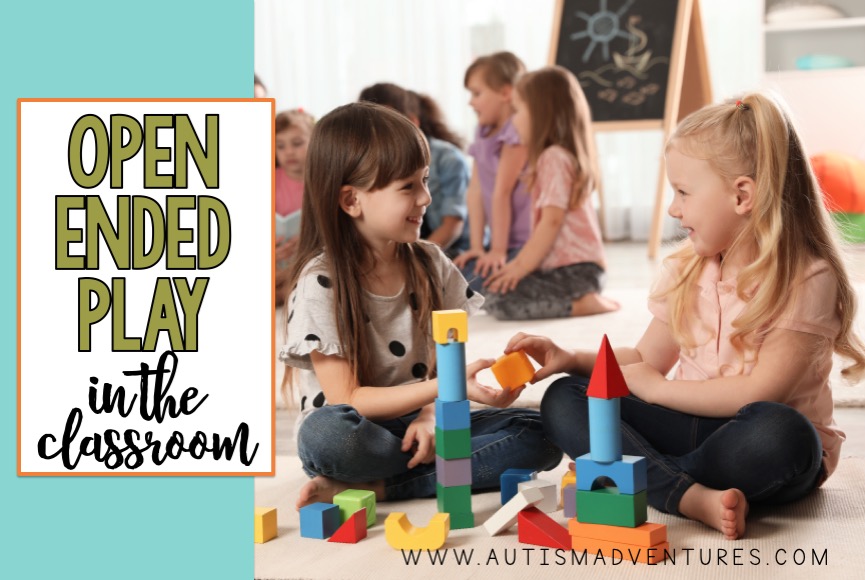
While few would argue that this type of structure is good for our kids, there are times that students benefit from not having everything planned for them. One of the best ways to provide students with non-structured opportunities is through open-ended play.
What is Open-Ended Play?
You may be asking – isn’t all play “open”? Well, not exactly. Open-ended play involves activities that are freely chosen by the child; play activities are completely child-directed, not teacher-directed. No limitations or specific rules are put into place for the activity and the child learns new things, most of the time through trial-and-error.
Open-ended play also has no specific goal. Children are not trying to achieve a particular outcome and there is no specified “ending” or “winner.” So, in thinking about play activities that we provide for children, how many are aligned with the characteristics of open-ended play?
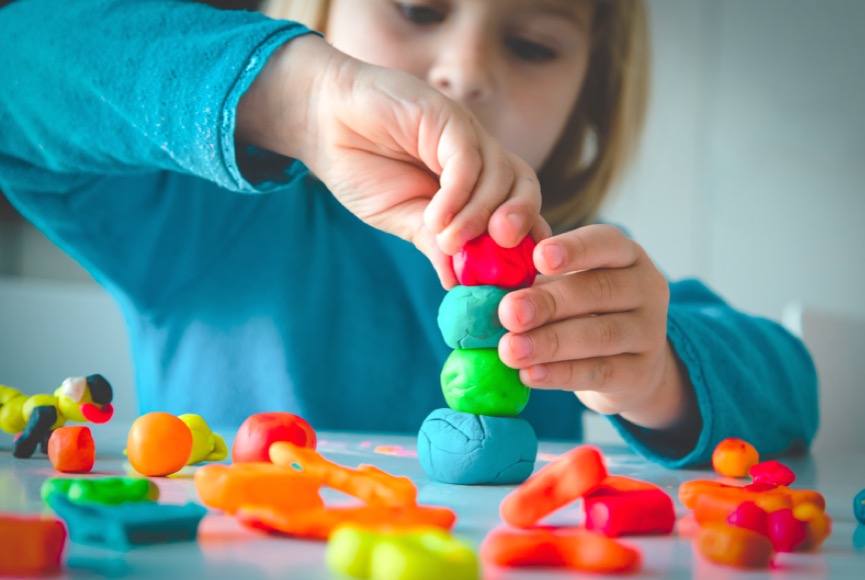
Benefits
There are many benefits for all children when they engage in open-ended play. However, students with disabilities may benefit the most. Students with disabilities sometimes have a smaller range of interests than their peers. They also have a smaller repertoire of “pretend” behaviors when compared with their typical peers.
When teachers provide open-ended play opportunities, their students benefit because:
- It allows children to make independent choices.
- Open ended play promotes creativity and allows children to use their imagination.
- It enhances students’ language development.
- Students increase social skills when they play with others.
- Students learn risk-taking; they develop a willingness to “try things out.”
Creating Open-Play in the Special Education Classroom
Let’s think about a closed-ended play in learning settings. A common item used for play in classrooms are puzzles. We tend to use those because they help develop problem solving and spatial awareness skills. However, a puzzle has a specific way that it HAS to be done in order to be CORRECT; these are not attributes of open-ended play. While there are many benefits of puzzle play in the classroom, it is not considered open ended.
The main thing to consider when creating open-play opportunities is the play materials. In general, you want to select play materials that are motivating, sensory, and exploratory, and that promote dramatic play. The best play materials are varied in complexity and structure.
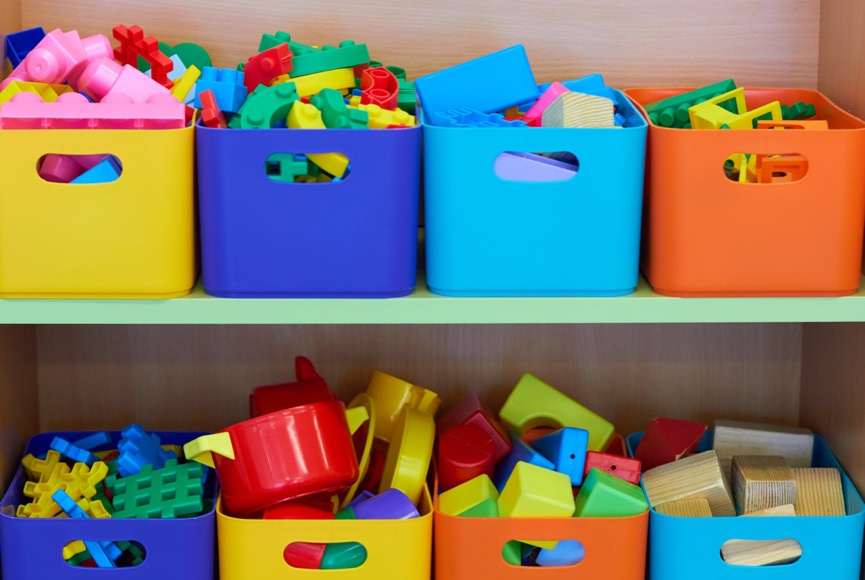
Examples of Open Ended Play
Legos
A very common example of an open-ended toy is Legos™. There are no specific ways that Legos have to be done, there is no correct/incorrect outcome, and there are no rules. Children can add to the versatility by incorporating props when they play with Legos™, like including action figures.
Open-ended toys like Legos™ tend to be appropriate for a wide range of ages, while closed-ended toys often are not. Consider puzzles; they have a developmental focus. On every puzzle box, there is a statement that says “appropriate for age ___ to ___. For example, a preschooler may require a puzzle that has only four pieces for it to be developmentally appropriate; a first-grader would need a puzzle that has a dozen pieces, and a third-grader may need a puzzle that has 30 pieces. For appropriate challenge.
Blocks and Magnatiles
Now, consider open-ended toys like blocks or Magnatiles; they have a very wide developmental range. Kindergartener can play with them “as is”, a third grader can play with them “as is”, and a fifth grader can play with them “as is”. The activities in which they engage with the materials may become more complex as they get older, but the materials are the same.
Magnatiles and blocks are great to build creativity and to be used in a lot of different scenarios. Use blocks and Magnatiles to make house, roads, castles, people, shape etc. Put them in your sensory table or take them outside. The limits are endless.
Make Believe
Make believe materials and toys are perfect examples of open ended play. Depending on the ages, abilities and interests of your students you can set up different make believe play activities. Consider play kitchens, dress up clothes or grocery stores.
Figurines/Cars
Another great opportunity for open ended in the classroom are various different figurines. This can include cars, animals, princesses etc. These items can usually be find for super cheap a second hand stores and yard sales. Many families at your school may be ready to donate toys such as thee too. Don’t be afraid to ask for donations!
Loose Parts Theory
Think about toddlers that you know. Although we typically purchase expensive, flashy toys for them, aren’t they often just as happy playing with spoons, pots, and pans? This aligns with a theory from the 1970s – the “theory of loose parts.” Loose parts are the toddler’s pots and pans – materials that children can play with that don’t have a specific set of directions. They can be carried, moved, lined up, and used in many different ways; the child makes the decision about how the materials are used. Loose part play materials promote active engagement by the child, while more traditional games and some toys make children more passive.
Loose parts can include items from the outdoors as well as parts that have been manufactured. Natural, outdoor loose parts include water, seeds, twigs, and small stones. Manufactured loose parts include buckets, boxes, cardboard rolls, fabric, and chalk. You probably already have “school-style” loose parts in your classroom: blocks, geometric figures, art supplies, fabric, sand or water tables, bubble liquid, and imaginative play centers (like a kitchen center or a dress-up center).
Conclusion
In many learning settings, children’s play is often relegated to playing with structured games, toys that respond to student actions (cause-effect toys), and electronics. These tend to promote passivity in students and when they are passive, the activity really isn’t play, it’s entertainment. Play is active: dressing up, pretending to be a chef, building architectural marvels with blocks.
To encourage open-ended play, set up loose materials for children. It doesn’t have to be costly to furnish your classroom with loose materials; in fact, it should be quite the opposite. The first place to look for loose materials is your house (and your garage!). Gold mine locations for open-play materials include yard sales and thrift stores. Then, be creative: go to a home improvement store or a lumber yard. Ask for small leftover pieces of wood that could be used for blocks. Blocks don’t need to be beautiful and polished. However, if you would like to have blocks that are colorful and pretty, give the task of painting, stamping, or drawing on them to your students!
Like what you read? Don’t forget it, PIN IT!
